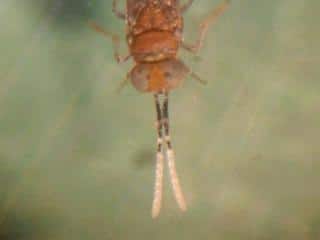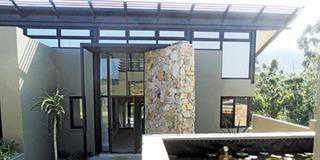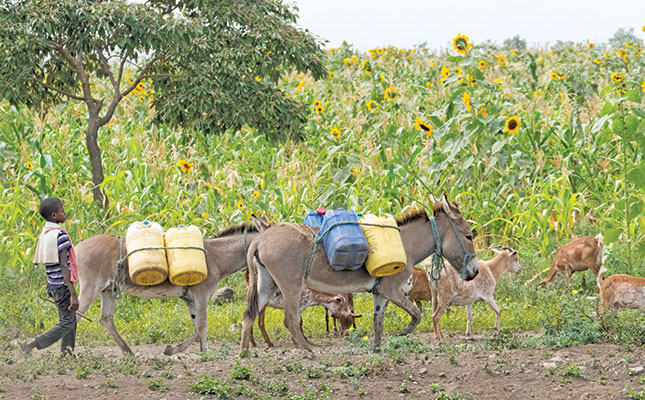
A naturally occurring parasitic wasp which scientists at Citrus Research International (CRI) have been eyeing for a number of years is currently being tested as a means to control mealybug. If the trial with the wasp (Anagyrus pseudococci) proves successful, the insect could be a valuable tool for farmers wishing to use a biocontrol agent (BCA) as part of their pest management approach.
“There are a number of species of BCAs which we have conducted augmentation trials with over the years and which are now being used commercially,” says Dr Sean Moore, IPM programme manager and project co-ordinator of mealybug research at the CRI.
“Anagyrus pseudococci is another species we are adding to the list. We’ve been considering it for more than 15 years. It’s a very exciting prospect.”
Anagyrus pseudococci is notoriously difficult to rear and Israeli company BioBee Biological Systems is one of only a few groups that have cracked the rearing protocol. BioBee mass-breeds this beneficial wasp along with other predatory wasps, mites and bugs. The company also mass-breeds the bumblebee for natural pollination of greenhouse crops. Through its subsidiary, BioFly, it is mass-breeding sterile Mediterranean fruit flies to control medfly populations.
Eastern Cape Trials
Biobee is running trials in Eastern Cape in conjunction with the CRI to test the efficacy of the wasp against mealybugs, predominantly on citrus. Insects have been released in Sundays River Valley and Citrusdal. Trials were started in November and will continue until harvest in May.
“The Citrusdal trial is on two sites of 4,16ha and 4,3ha each,” explains BioBee export manager Rami Friedman. “About 2 500 to 5 000 Anagyrus pseudococci individuals are released. More females are released to quickly establish a core egg-laying population.”
This is the second year the wasp is being released at Citrusdal. “The first year was a reasonable success,” says Friedman. “However, the temperature at the end of the growing season went up to 50°C, which was devastating for the natural enemies. This year we moved the initiation period from January to November when the mealybug infestation is low. We believe we’ll gain better control by preventing the mealybug from establishing a bigger population.”
At the Sundays River site, researchers are releasing 2 500 to 30 000 wasps per hectare to determine which number is most feasible. “We hope to introduce a commercial solution to mealybug for farmers in South Africa and aim to reduce both the level of infestation and the percentage of unmarketable fruit. We’re very excited about it and think our counterparts in South Africa will be too,” says Friedman.
-releasing-Anagyrus.gif)
Top five pests
While damage caused by mealybugs in citrus has never been quantified, it is one of the top five insect pests in the citrus industry. “Mealybug can be a tremendous pest on citrus, particularly on certain cultivars such as grapefruit and navel oranges,” says Dr Moore.
“It can cause fruit to drop off the tree; and if there is an infestation when fruit is still small, it can cause ‘raised shoulders’ or lumpiness around the calyx. “One of the biggest problems is that, like all sucking insects, it produces honeydew on which sooty mould can grow. This discolours fruit and makes it unexportable.
“It can also attract secondary pests such as carob moth and has been associated with a fungal disease called Alternaria navel-end rot. Some mealybug species occurring on citrus have quarantine status, which means they are not permissible on export fruit,” says Dr Moore.
An integrated approach
BCAs such as Anagyrus pseudococci are indispensable to integrated pest management (IPM), which combines biological control with the selective use of chemicals. “IPM in citrus is needed for several reasons,” says Dr Moore.
“First, we want to establish a system which is sustainable – and a purely chemical programme is not sustainable. Chemical sprays have a very limited residual efficacy, after which they leave a vacuum because not only are they no longer effective in controlling the pest, but they also often have a detrimental effect against naturally occurring BCAs.
“IPM seeks to use chemical pesticides only if and when necessary, and to use those which have the least impact on natural enemies. Within IPM, the most important component is biocontrol. One seeks to optimise biocontrol, conserve BCAs and to use those chemical pesticides that are least harmful to biocontrol.”
Another reason to shift to IPM is that world markets are becoming increasingly discerning and more concerned about pesticide residue. “One wants to be as sensible as possible about the use of chemicals, and manage the pesticides as well as possible to avoid the onset of resistance,” adds Dr Moore.
While there is increasing awareness of the need to shift to a softer IPM approach to meet the new demands of an environmentally aware market, Dr Moore believes that only a few thousand hectares are being treated with parasitoids each year. Most farmers routinely follow a preventative spray programme, which is effective but comes at significant cost.
“Anagryus pseudococci is an exciting prospect because, along with another species, Coccidoxenoides perminutus, it is the dominant naturally occurring species. So we do know that it is adapted to the environment in which we are releasing it and therefore it has a good prospect of doing well. However, we will only have the full results by the end of this season in May with preliminary results towards the end of February,” concludes Dr Moore.
- Contact Dr Sean Moore on 041 583 5524 or [email protected].
- Contact Rami Friedman on +972 4 609 6907, email [email protected] or visit www.biobee.com •FW













